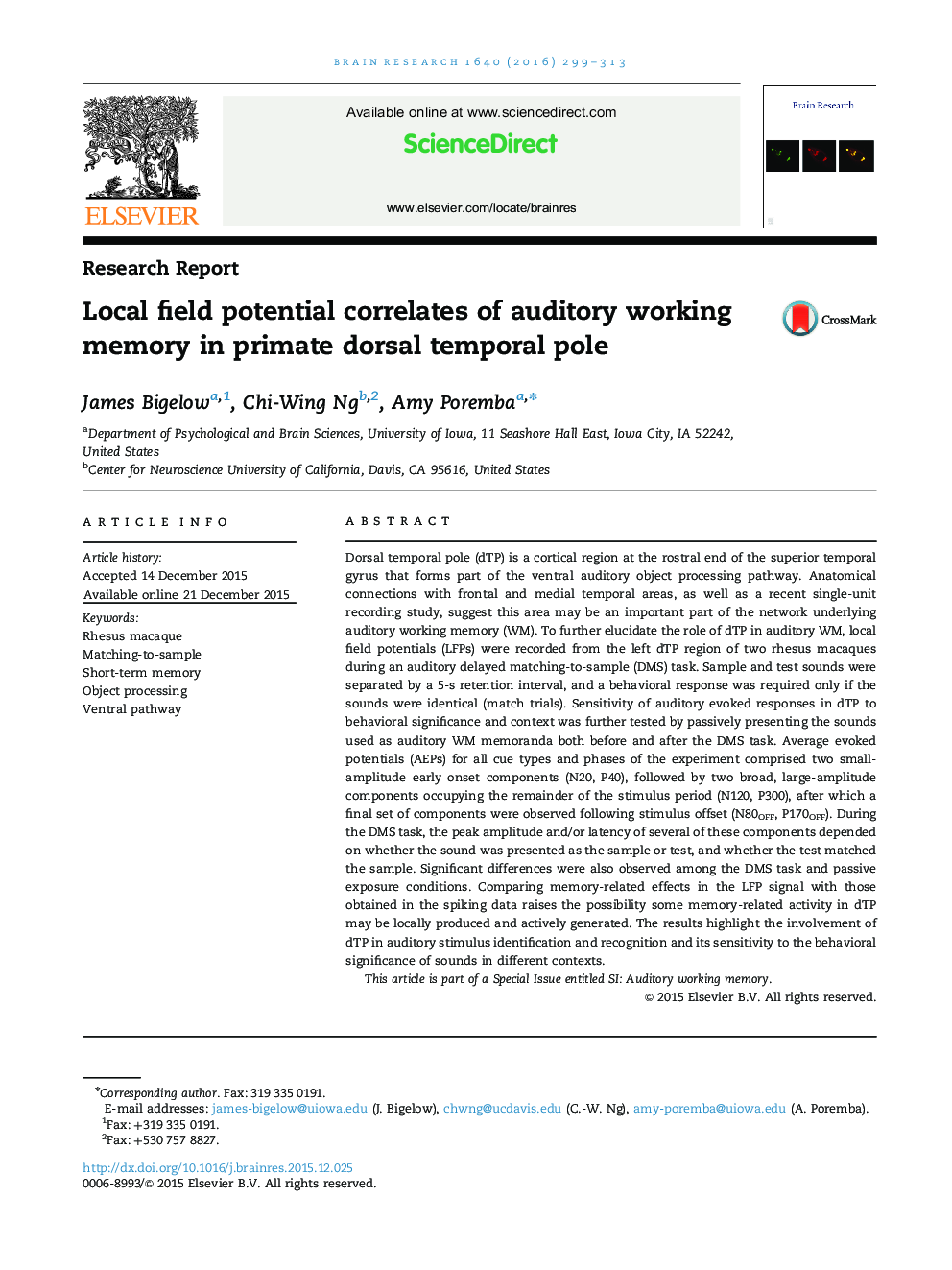| کد مقاله | کد نشریه | سال انتشار | مقاله انگلیسی | نسخه تمام متن |
|---|---|---|---|---|
| 6262544 | 1613801 | 2016 | 15 صفحه PDF | دانلود رایگان |
- Dorsal temporal pole activity correlated with auditory working memory.
- Local field potential (LFP) responses differed for sample and test stimuli.
- LFP responses were also different for matching and non-matching test stimuli.
- LFP responses varied between passive listening phases and the memory task.
Dorsal temporal pole (dTP) is a cortical region at the rostral end of the superior temporal gyrus that forms part of the ventral auditory object processing pathway. Anatomical connections with frontal and medial temporal areas, as well as a recent single-unit recording study, suggest this area may be an important part of the network underlying auditory working memory (WM). To further elucidate the role of dTP in auditory WM, local field potentials (LFPs) were recorded from the left dTP region of two rhesus macaques during an auditory delayed matching-to-sample (DMS) task. Sample and test sounds were separated by a 5-s retention interval, and a behavioral response was required only if the sounds were identical (match trials). Sensitivity of auditory evoked responses in dTP to behavioral significance and context was further tested by passively presenting the sounds used as auditory WM memoranda both before and after the DMS task. Average evoked potentials (AEPs) for all cue types and phases of the experiment comprised two small-amplitude early onset components (N20, P40), followed by two broad, large-amplitude components occupying the remainder of the stimulus period (N120, P300), after which a final set of components were observed following stimulus offset (N80OFF, P170OFF). During the DMS task, the peak amplitude and/or latency of several of these components depended on whether the sound was presented as the sample or test, and whether the test matched the sample. Significant differences were also observed among the DMS task and passive exposure conditions. Comparing memory-related effects in the LFP signal with those obtained in the spiking data raises the possibility some memory-related activity in dTP may be locally produced and actively generated. The results highlight the involvement of dTP in auditory stimulus identification and recognition and its sensitivity to the behavioral significance of sounds in different contexts.This article is part of a Special Issue entitled SI: Auditory working memory.
Journal: Brain Research - Volume 1640, Part B, 1 June 2016, Pages 299-313
